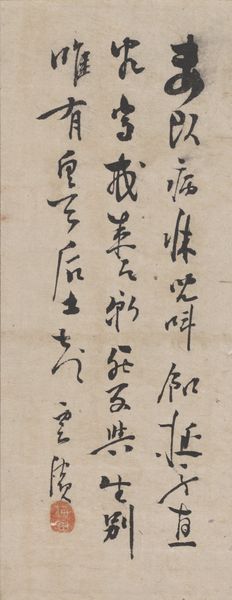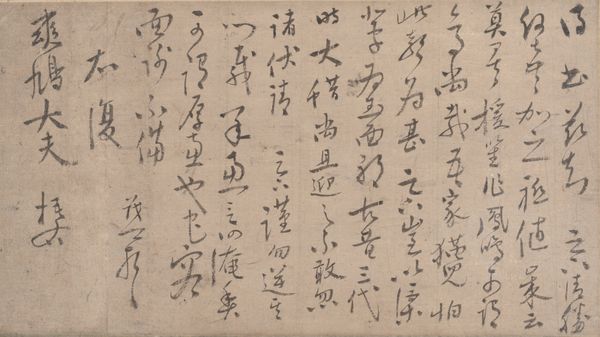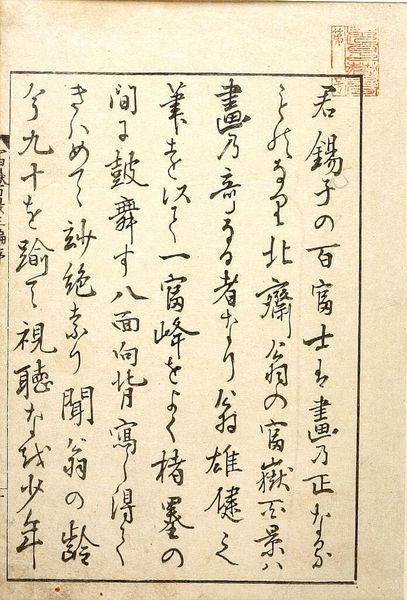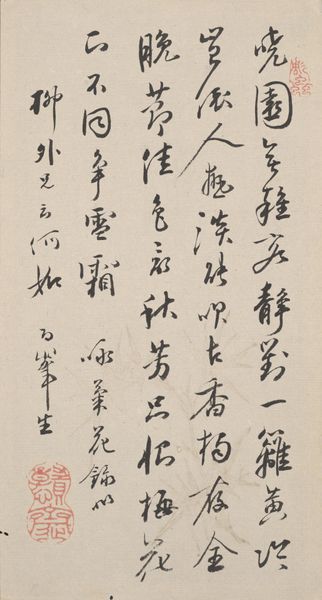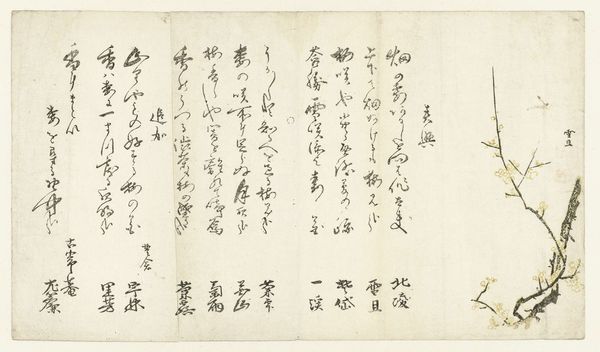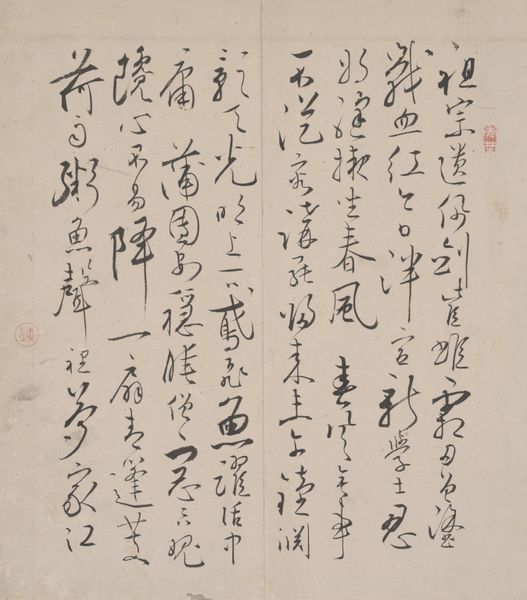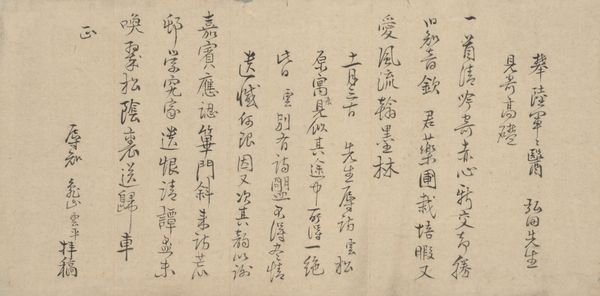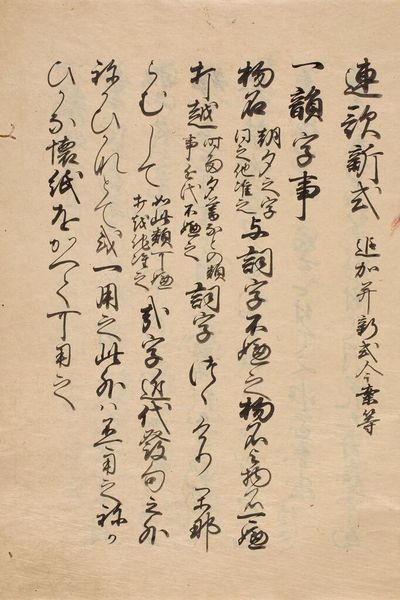
drawing, paper, ink-on-paper, ink
#
drawing
#
water colours
#
asian-art
#
paper
#
ink-on-paper
#
ink
#
calligraphic
#
line
#
calligraphy
Dimensions: 4 3/8 × 15 15/16 in. (11.11 × 40.48 cm)
Copyright: No Known Copyright
Curator: Here we have a fascinating example of Japanese calligraphy from around 1700, titled "Letter" and created by Nangaku Etsuzan. The work, rendered in ink on paper, features fluid calligraphic lines. What strikes you about this piece? Editor: Immediately, I see a dynamic energy in the composition, despite its small scale. The strokes dance across the page, and the varying weights of the ink create a sense of rhythm. There is also something profoundly intimate about this, which invites the viewer to observe its beauty, even if one can’t readily decipher its message. Curator: Indeed. We can see the influence of classical Chinese calligraphy in Etsuzan's work. During this period, there was significant emphasis placed on understanding the history and the practice of the ancient arts. This 'letter' provides a compelling insight into that relationship and, more broadly, highlights the cultural currents between China and Japan. Editor: Knowing this background allows us to read the artwork, beyond the shapes, as a gesture toward those socio-cultural exchanges. The act of creating calligraphic work becomes a marker of education and status, thus signaling identity through artistic means. What do we know about this work as an act of communication? Was this actually a letter, and who was the recipient? Curator: Sadly, very little is known about its precise origins and whom it was destined for. But let us also note that works like this are highly valued because they exemplify literati culture. The museum's role is crucial in preserving not just the artifact but its intellectual and historical contexts for contemporary viewers. Editor: Absolutely. Museums, like the Minneapolis Institute of Art where this piece is located, act as crucial intermediaries in ensuring works like "Letter" do not only survive, but stay meaningful, particularly amidst shifting cultural landscapes and political narratives. For example, it might be helpful to highlight calligraphy traditions through local contemporary art that might connect it to diasporic experiences and other cultural influences, providing broader community access. Curator: I think considering this piece as a bridge through time and cultures has certainly broadened my perspective. Thanks! Editor: Agreed. Recognizing art’s political importance as a point of both historical exchange and contemporary engagement makes the experience richer, for me.
Comments
No comments
Be the first to comment and join the conversation on the ultimate creative platform.
